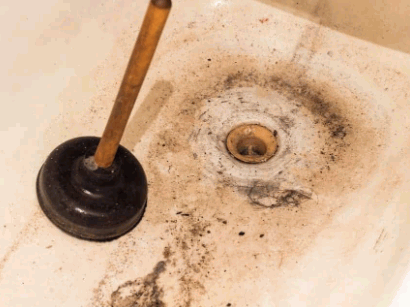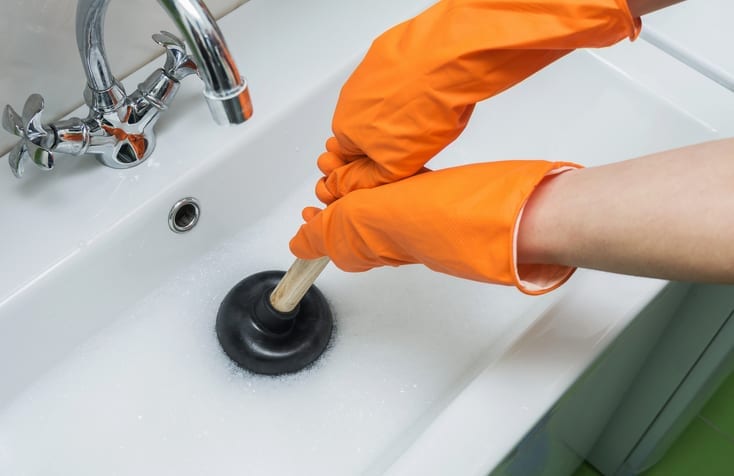Ways to Successfully Use Plungers and Drain Cleaners: Expert Insights
Ways to Successfully Use Plungers and Drain Cleaners: Expert Insights
Blog Article
The author is making a number of great pointers about Tips on How to Effectively Use a Plunger in general in this article underneath.

Intro
Correct upkeep of family drains pipes is necessary for stopping blockages and making sure smooth water flow. Among the trick tools in every property owner's toolkit is the bettor, along with different drainpipe cleansers created to deal with stubborn obstructions successfully. This short article discovers exactly how to use bettors and drain cleansers efficiently to maintain your drains moving easily.
Area 1: Comprehending Plungers
Kinds of Plungers
There are several kinds of bettors available, each made for different kinds of drains pipes and clogs. One of the most usual types include mug bettors, flange plungers, and accordion plungers.
Just How Plungers Job
Plungers deal with the principle of developing pressure and suction to displace clogs. When appropriately used over a drain, they produce a vacuum cleaner that can take out particles or separate clogs.
Picking the Right Bettor
Choosing the best plunger depends on the sort of drainpipe and the nature of the blockage. Cup bettors are excellent for sinks and bathtubs, while flange plungers are much better fit for toilets due to their style.
Common Blunders with Plungers
Staying clear of these errors guarantees effective plunging: inappropriate seal around the drain, insufficient pressure, and not clearing surrounding particles.
Section 2: Using Plungers Properly
Prep work
Before diving, guarantee the bettor covers the drain entirely and develops a tight seal. Clear any type of visible particles around the drain opening.
Method
Beginning with gentle diving motions to construct suction. Increase stress progressively, utilizing a constant rhythm. Repeat as required up until the drainpipe clears.
Fixing Tips
If diving doesn't work, attempt readjusting the seal, applying petroleum jelly for a far better seal, or using a various kind of bettor.
Area 3: Comprehending Drain Cleaners
Sorts Of Drain Cleaners
Drain cleaners can be chemical or chemical. Chemical cleaners use solid chemicals to dissolve clogs, while chemical cleaners make use of natural enzymes to break down raw material.
Exactly How Drain Cleansers Work
Chemical cleansers respond with blockages to dissolve them, while enzymatic cleansers break down organic products like hair and oil without hurting pipelines.
Safety Factors to consider
Constantly wear gloves and eye defense when using chemical drain cleansers. Ensure sufficient air flow and adhere to manufacturer instructions very carefully.
Eco-Friendly Alternatives
Take into consideration using vinegar and baking soda or enzyme-based cleaners for green choices that are more secure for pipes and the setting.
Section 4: Utilizing Drainpipe Cleaners Properly
Application Techniques
Pour chemical cleansers straight into the drain opening. Permit them to help the recommended time before purging with warm water. Enzymatic cleaners ought to rest overnight.
Preventative measures
Prevent mixing various sorts of cleaners, as this can create toxic fumes. Never utilize chemical cleaners together with a bettor, as splashing can take place.
Taking Care Of Stubborn Clogs
For persistent obstructions, think about using a pipes snake or calling a professional plumbing professional to avoid damages to pipes.
Conclusion
To conclude, understanding exactly how to use bettors and drainpipe cleaners properly is vital for maintaining healthy pipes systems. By picking the right tools and methods, home owners can tackle minor obstructions and prevent major plumbing problems down the line.
How to Use a Plunger to Unclog a Drain
The humble plunger is a simple yet effective tool for breaking clogs in sinks, tubs and toilets. This handy tool is easy to use. You can make the most of its power if you understand how it works. Ready to dive in? Here’s what you need to know.
Safety First!
Never use a plunger with drain chemicals. Water will splash as you work, and the chemicals can spatter, burning skin and eyes. It’s a good idea to use rubber gloves and wear safety goggles when you work on a clog.
Choose the Right Tool for the Job
Plungers come in two different styles. Sinks, bathtubs and showers require a cup plunger. Like its name suggests, the rubber end is shaped like a cup. Use a flange plunger on toilets. These plungers have a rubber funnel extending from the cup. A plunger needs to be big enough to cover the drain.
Ready, Set, Plunge!
Coat the rim: Coat the plunger rim with petroleum jelly. This helps make a better seal.
Block outlets: Hold a wet rag over nearby outlets such as the overflow vent or the drain in a second sink.
Release air: Insert the plunger at an angle into the water. Water will displace air in the cup. A water-filled cup is more forceful than one filled with air.
Keep the plunger upright: Hold the plunger perpendicular to the drain. Use fast, forceful strokes, but make the first stroke gentle. The first stroke can create a splash if the cup still contains air. Thrust the plunger 15 to 20 times.
Snap off the plunger: The final stroke should be a strong upward motion that ends when the plunger snaps off the drain.
Repeat the process: you may need to repeat this sequence several times. When the water drains away, your work is done. High-five! https://plumbernw.com/blog/how-to-use-a-plunger-to-unclog-a-drain/

Application Techniques
Pour chemical cleansers straight into the drain opening. Permit them to help the recommended time before purging with warm water. Enzymatic cleaners ought to rest overnight.
Preventative measures
Prevent mixing various sorts of cleaners, as this can create toxic fumes. Never utilize chemical cleaners together with a bettor, as splashing can take place.
Taking Care Of Stubborn Clogs
For persistent obstructions, think about using a pipes snake or calling a professional plumbing professional to avoid damages to pipes.
Conclusion
To conclude, understanding exactly how to use bettors and drainpipe cleaners properly is vital for maintaining healthy pipes systems. By picking the right tools and methods, home owners can tackle minor obstructions and prevent major plumbing problems down the line.
How to Use a Plunger to Unclog a Drain
The humble plunger is a simple yet effective tool for breaking clogs in sinks, tubs and toilets. This handy tool is easy to use. You can make the most of its power if you understand how it works. Ready to dive in? Here’s what you need to know.
Safety First!
Never use a plunger with drain chemicals. Water will splash as you work, and the chemicals can spatter, burning skin and eyes. It’s a good idea to use rubber gloves and wear safety goggles when you work on a clog.
Choose the Right Tool for the Job
Plungers come in two different styles. Sinks, bathtubs and showers require a cup plunger. Like its name suggests, the rubber end is shaped like a cup. Use a flange plunger on toilets. These plungers have a rubber funnel extending from the cup. A plunger needs to be big enough to cover the drain.
Ready, Set, Plunge!
Coat the rim: Coat the plunger rim with petroleum jelly. This helps make a better seal. Block outlets: Hold a wet rag over nearby outlets such as the overflow vent or the drain in a second sink. Release air: Insert the plunger at an angle into the water. Water will displace air in the cup. A water-filled cup is more forceful than one filled with air. Keep the plunger upright: Hold the plunger perpendicular to the drain. Use fast, forceful strokes, but make the first stroke gentle. The first stroke can create a splash if the cup still contains air. Thrust the plunger 15 to 20 times. Snap off the plunger: The final stroke should be a strong upward motion that ends when the plunger snaps off the drain. Repeat the process: you may need to repeat this sequence several times. When the water drains away, your work is done. High-five! https://plumbernw.com/blog/how-to-use-a-plunger-to-unclog-a-drain/

I'm very drawn to and I hope you liked our piece. Loved our posting? Please share it. Help another person check it out. Thanks a lot for going through it.
About Report this page